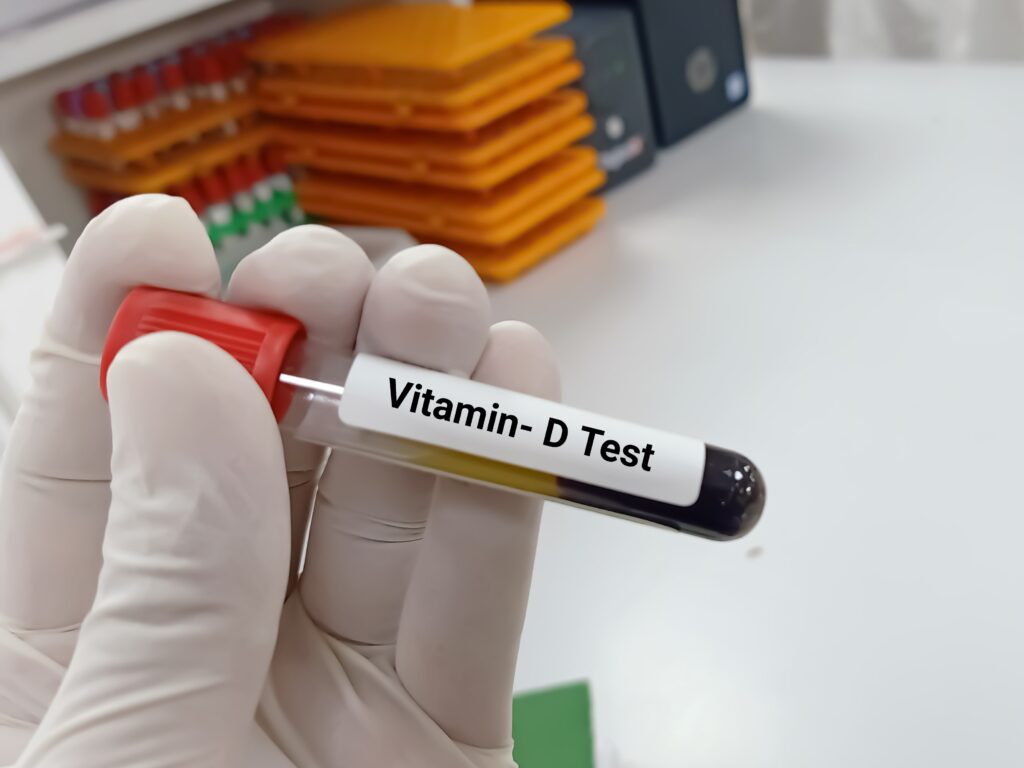What is a Vitamin D Test?
A Vitamin D test is a simple blood test. It checks the amount of Vitamin D in your body. Doctors use this test to see if you have enough Vitamin D for good health. Many people ask, “How to check Vitamin D levels?” This test gives a clear answer. Most often, the test measures a form called 25-hydroxyvitamin D. This is the best way to know your Vitamin D status.
Why is a Vitamin D Test Important?
Vitamin D helps your body absorb calcium. Because of this, it keeps your bones strong. It also supports your muscles and immune system. If you do not have enough Vitamin D, you may face health problems. For example, weak bones or frequent sickness can occur. Therefore, a Vitamin D test helps find problems early. Early action can prevent serious issues.
Symptoms and Risks of Vitamin D Deficiency
Vitamin D deficiency means your body does not have enough Vitamin D. This can cause many symptoms. Some people may not notice any signs at first. However, common symptoms include:
Low Vitamin D can also raise the risk of bone fractures. In children, it may cause rickets, which leads to soft bones. In adults, it can cause osteoporosis, making bones thin and weak. Because of these risks, knowing your Vitamin D levels is important.
How is the Vitamin D Test Performed?
Procedure
The Vitamin D blood test procedure is quick and easy. A healthcare worker will take a small blood sample from your arm. The process usually takes less than five minutes. After the sample is collected, it goes to a lab for testing. You can return to normal activities right after the test.
Preparation
Most people do not need special preparation for this test. However, it is a good idea to ask your doctor if you should stop any medicines before the test. Some medicines can affect your Vitamin D levels. Always follow your doctor’s advice for the best results.
Understanding Vitamin D Test Results
After the test, your doctor will explain the results. Here is what the numbers usually mean:
These ranges may vary slightly by lab. If your levels are low, your doctor will discuss next steps. Sometimes, high levels can also be harmful. Therefore, it is important to keep Vitamin D in a healthy range.
Treatment and Next Steps if Levels are Abnormal
If your Vitamin D levels are low, your doctor may suggest:
Sometimes, your doctor may check your levels again after a few months. If your levels are too high, you may need to lower your supplement dose. Always follow your doctor’s advice for safe treatment.
Prevention and Lifestyle Guidance for Healthy Vitamin D Levels
There are simple ways to keep your Vitamin D at a healthy level. For example, you can:
However, too much sun can harm your skin. Always use sunscreen if you stay outside for long. Also, talk to your doctor before starting any new supplement.
Conclusion
In summary, a Vitamin D test is a simple way to check your health. It helps find problems early and guides treatment. If you have symptoms of Vitamin D deficiency or are at risk, talk to your doctor. Consult a healthcare provider for personalized advice on Vitamin D testing and supplementation.

